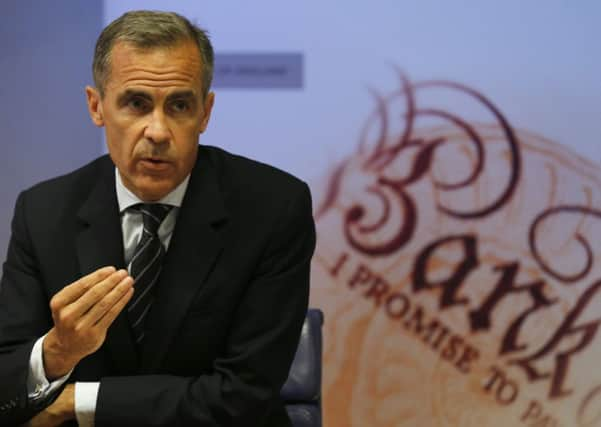Comment: Pay growth key in BoE’s rate rise dilemma


That seemed to be the thrust of the BoE governor Mark Carney’s message accompanying the latest quarterly inflation report.
The sharp fall of the pound on the currency markets said it all. Financial markets had got excited after the governor in his City Mansion House speech earlier this summer had suggested a bank rate rise could come earlier than they expected.
Advertisement
Hide AdAdvertisement
Hide AdAs markets at that stage had been expecting the first rise next spring, many assumed it meant there might be a monetary tightening as early as this November or December instead. But after the dovish tone of Carney’s remarks yesterday, even with the obligatory caveat that unexpected events can change things, many in the City now feel that rates are likely to remain unchanged until some time between February and May next year.
The Bank’s problem is that, taken in the round, more aspects of the economy are pointing to the need for a rise than to keeping rates at record lows.
That’s true from services to manufacturing, even if there are concerns about lack of productivity gains and lacklustre exports.
But there is that wild card of sluggish wage growth. The Bank’s monetary policy committee (MPC) is justifiably concerned that, with average wage growth not keeping pace with inflation, a precipitate rise could choke off the consumer spending which is currently a key part of the recovery.
Official figures yesterday showed average pay growth at an all-time low of just 0.6 per cent in the quarter to June. The BoE has cut its own forecast for wage growth this year by half to 1.25 per cent.
It suggests that, for many, this is a bloodless economic recovery, one that is fine as far as it goes but with little feelgood factor. Constructing a recovery by numbers, so to speak.
Consumer confidence could therefore be very vulnerable to a rate rise that pushes mortgage and business costs up, and squeezes real spending power.
In just over a year we have segued imperceptibly from falling unemployment being the reference for a rate rise to hoped-for evidence that homeowners have enough money coming through the door to be able to take a bank rate increase on the chin.